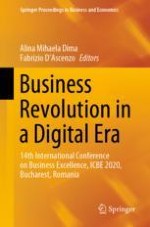2021 | Buch
Business Revolution in a Digital Era
14th International Conference on Business Excellence, ICBE 2020, Bucharest, Romania
herausgegeben von: Prof. Dr. Alina Mihaela Dima, Prof. Fabrizio D'Ascenzo
Verlag: Springer International Publishing
Buchreihe : Springer Proceedings in Business and Economics
